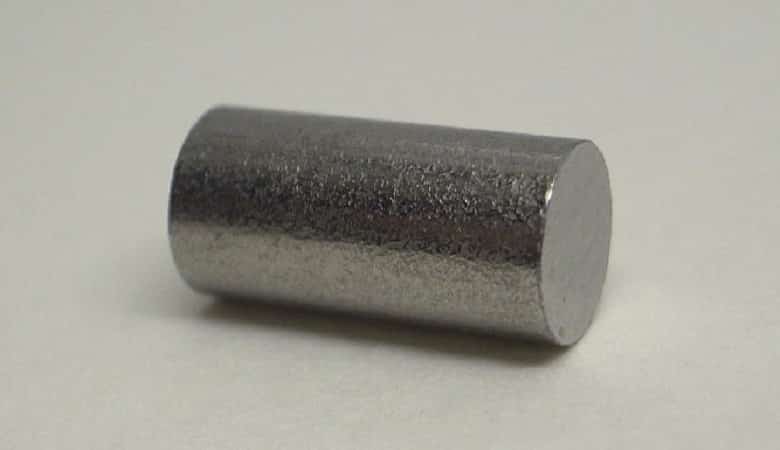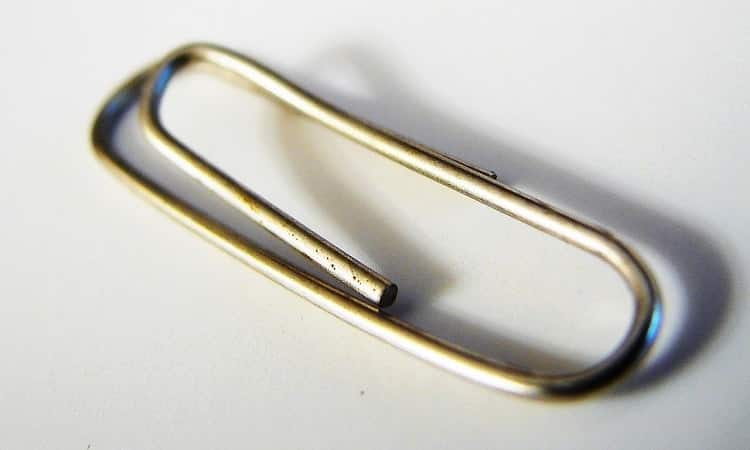Have you ever wondered what things weigh 100 kilograms or come close to it? Well, there are several very interesting animals and items that weigh 100kgs.
Why does this matter? First, it’s fun knowing what things weigh, and it gives you a better idea of what 100 kilograms looks like. By knowing common things that weigh 100 kgs, you can quickly make weight comparisons whenever you need to.
Some of them will weigh exactly 100k gs, while others will be lighter or heavier. Whatever the case, these items will help you get an estimate of what 100 kgs or 220 lbs looks and feels like.
1. Moon bears
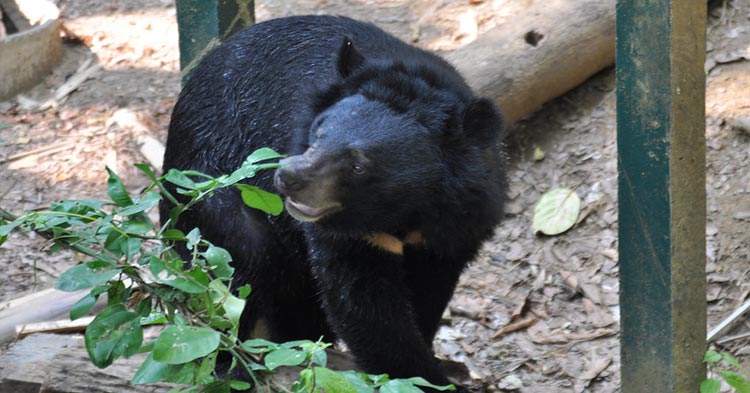
Also referred to as Himalayan, Tibetan, or Asiatic black bears, these animals have an average weight of 104 kilograms or 230 pounds. Male moon bears can weigh anywhere between 100 to 200 kilograms, with females weighing half as much.
They are found mostly in the Himalayas, Southeast Asia, and some parts of Eastern Asia, such as Japan. They are omnivorous, feeding on insects, small fruits, small mammals, birds, and carcasses.
They are called moon bears because they have a whitish mark on their chest that resembles a crescent moon.
2. Newborn Elephant calves
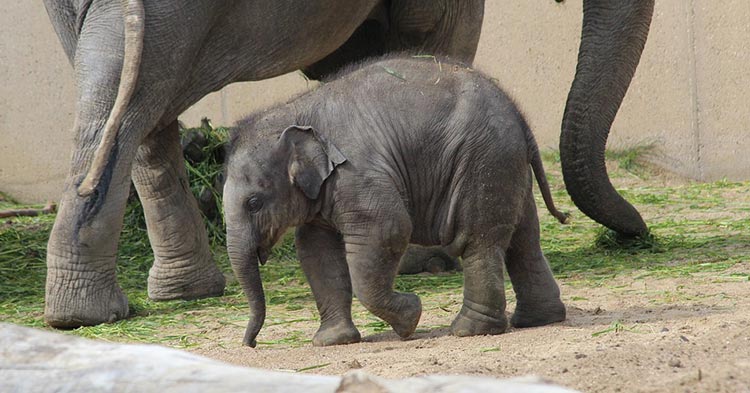
A newborn elephant can weigh anywhere between 90 to 100 kgs at birth and stand about 3 feet tall.
This is because elephants have a longer gestation period than most mammals carrying a pregnancy for almost 22 months; that’s close to 2 years, giving the calf enough time to grow because, unlike humans, they have to start walking at birth.
Female elephants, also called cows, can give birth to a calf every 2 to 4 years. Elephant milk is incredibly rich, and it’s what the calves feed on for the first 4 months of life. They can consume up to 20 pints of milk a day, and drinking that much allows them to gain about 30 pounds a week.
3. A Giant Panda Bear
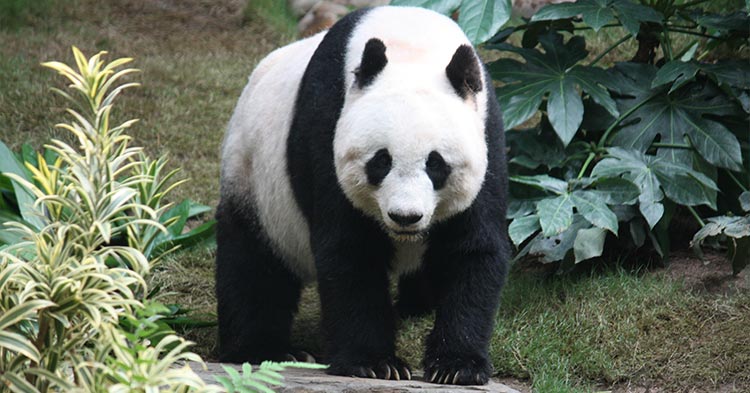
These black and white bears have an average weight of about 100 kgs. Male adult bears can weigh anywhere between 100 and 150 kgs, while females who are 10 to 20 percent smaller than their male counterparts can weigh anywhere between 60 to 125 kgs.
These bears are primarily herbivorous, and their diet consists mainly of bamboo. An adult panda can eat anywhere between 9 to 14 kgs of bamboo a day.
They eat a lot of bamboo shoots to compensate for the limited energy content the bamboo has. These bears have the digestive system of a carnivore similar to other bears, but they can digest plant cellulose thanks to the microbes in their guts.
4. Two Pacific Giant Octopuses
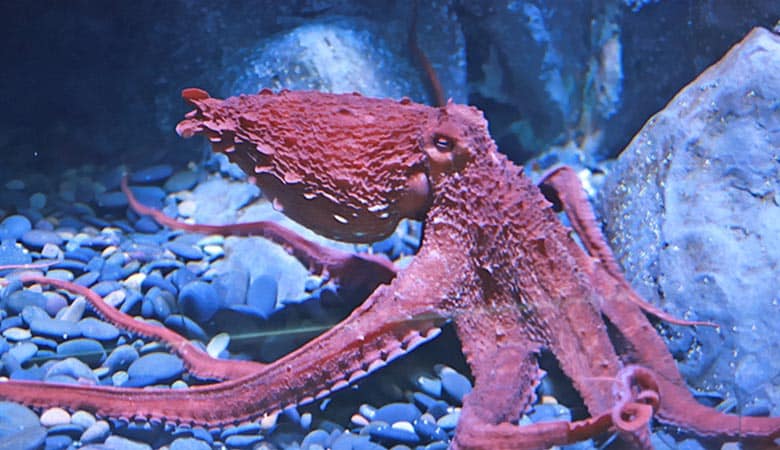
The Pacific Giant Octopus is the biggest octopus species known to man. It grows bigger and lives longer than other octopus species, with the largest specimen growing up to 30 feet, weighing about 270 kgs (600 lbs).
Average giant octopuses grow to about 16 feet and weigh about 50 kgs. Their diet consists mostly of shrimp, clams, lobsters, and fish, which they hunt at night.
They have also been known to hunt and eat sharks and birds, using their beaklike mouths to puncture and tear flesh.
They live for about 4 years, and both males and females pass away soon after breeding. However, the females live long enough to tend to their young. During this brooding period, they don’t eat and usually die soon after.
5. Pacific white-sided Dolphin
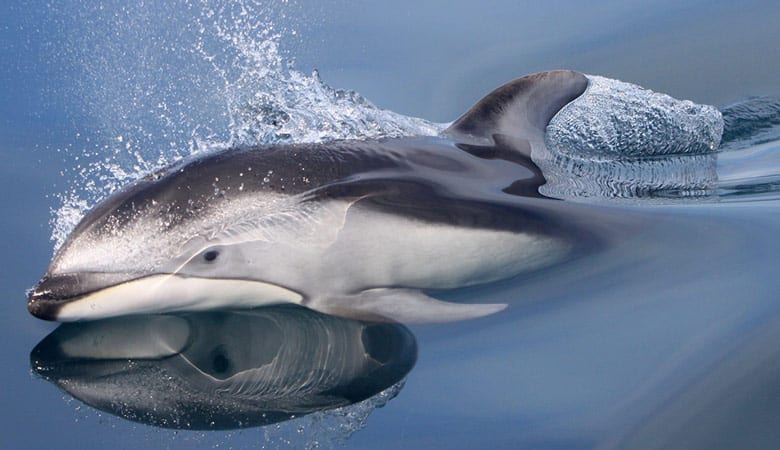
Also referred to as the hookfin porpoise, this very active dolphin found in the North Pacific Ocean has an average weight of about 110 kgs. Females can weigh as much as 150 kgs while males can get up to 200 kgs.
Their diet consists of hake, squid, herring, salmon, cod, and anchovies. These dolphins are larger than dusky dolphins and are called white-sided dolphins because of the white coloration on the sides and under their bodies.
The species is very friendly and mixes with many other aquatic mammals such as whales and other dolphin species.
6. The Hourglass Dolphin
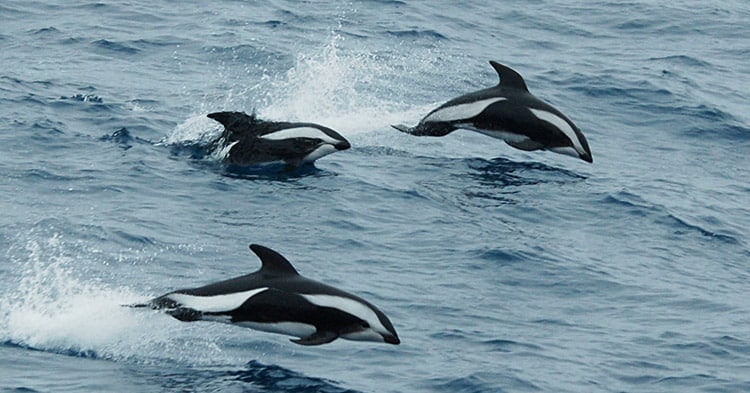
The hourglass dolphin, yet another dolphin that appears on this list, lives in the Antarctic, and it’s the only cetacean species to be widely accepted as a species based only on witness accounts.
This dolphin weighs anywhere between 90 to 120 kgs feeding mostly on squid, crustaceans, and fish. Most males are smaller than females, and they have been known to live anywhere between 27 to 46 years.
They are called hourglass dolphins because of the marking on the side of their bodies that resemble hourglasses. Because of these white patches on their bodies, they have been referred to as sea cows by whalers.
7. The Red Kangaroo
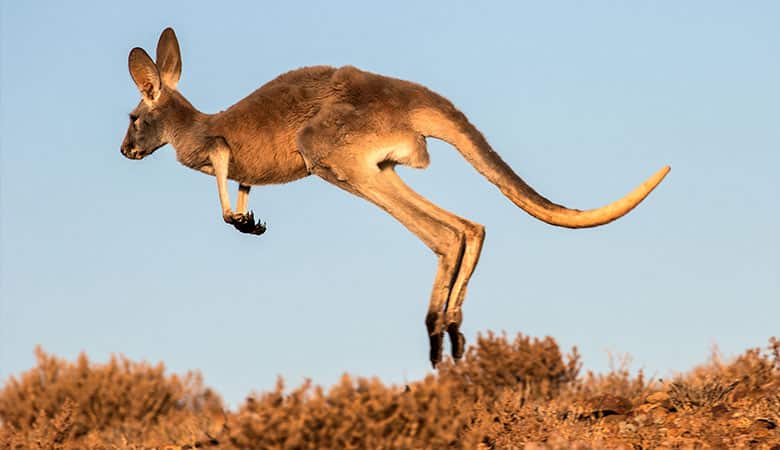
This herbivorous mammal weighs about 100 kgs and is the world’s largest marsupial. Indigenous to Australia’s deserts, these marsupials can live up to 23 years.
They are sexually dimorphic, meaning the males and females have different characteristics. The males are bigger, weighing anywhere between 55 to 100 kgs, with females weighing anywhere between 18 to 40 kgs.
The female red kangaroo can only have one baby at a time, and at birth, they are as small as a cherry. The infant kangaroo climbs into the mother’s pouch and doesn’t come out for over 2 months.
8. A beer keg
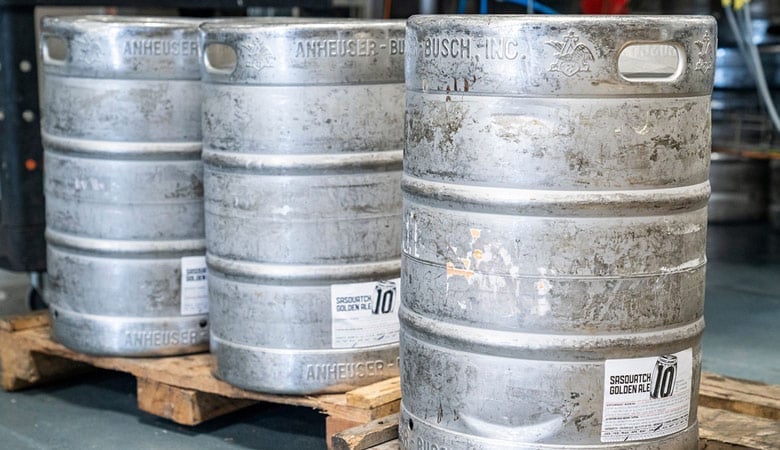
When a keg of beer is full, it weighs about 72 kgs or 160 pounds. When empty, a ½ barrel keg weighs about 30 pounds, a ¼ barrel 22 pounds, and a ⅙ barrel weighs 16.5 pounds.
If you are wondering how many beers are in a keg, it depends on the capacity of the keg. For instance, since beer weighs the same as water, a full keg can hold about 58 liters, which is equivalent to 165-12oz or 124-16oz beers.
This is the most common barrel size used because it provides the most cost advantage of buying beer in bulk.
Many Things Weigh 100 kgs
The more you look around you, you will notice things that weigh 100 kgs or come close to it. This list doesn’t represent a complete listing of all the things that weigh a hundred kilograms; there are a lot more. This list, however, gives you a clear idea of what 100 kgs look like.


